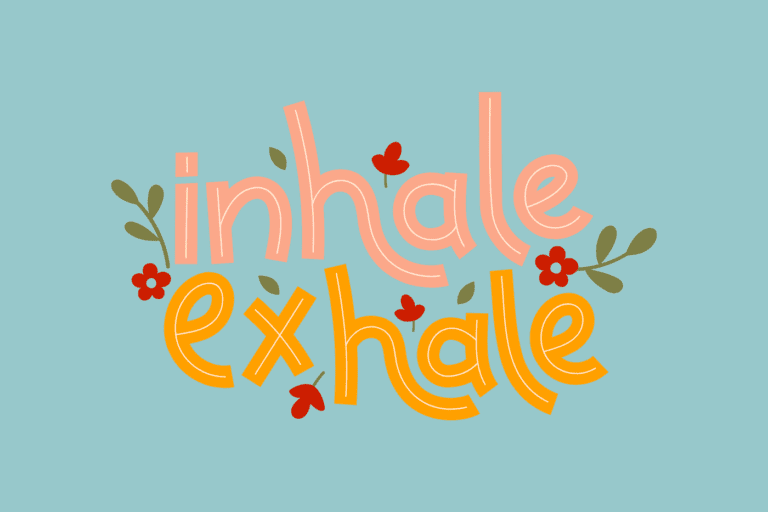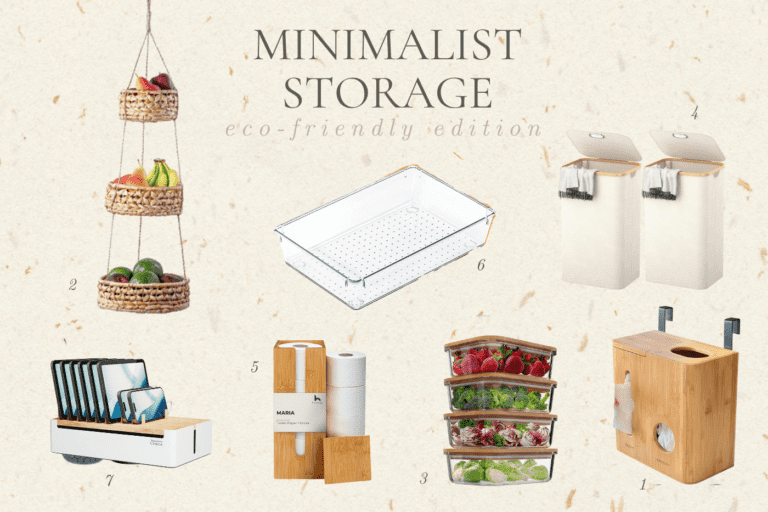Are you feeling the weight of decision fatigue, torn between what’s convenient and what’s truly meaningful? Do you long for your choices to align with your values and make a positive difference, but find yourself caught in the whirlwind of modern life?
Worry not, because this 7-Step Guide to Mindful Consumption is here to gently guide you through the path of mindful consumption.
It aims to offer solace, presenting practical steps and examples that showcase how even the smallest of choices, made with love and consciousness, can create waves of change.
What Is Mindful Consumption and Why Does It Matter?
Mindful consumption is about being present and intentional in the choices we make regarding what we buy, use, and support. It involves considering the impact of our actions on ourselves, others, and the environment.
How does mindful consumption impact our well-being and the planet?
- Boosts Personal Well-being:
- Example: Imagine buying fewer clothes but investing in high-quality, ethically made pieces that you love. This not only simplifies your wardrobe but also boosts your confidence and satisfaction every time you wear them.
- Fosters Sustainable Living:
- Example: Opting for a reusable water bottle instead of buying single-use plastic bottles. It seems small, but over time, it significantly reduces plastic waste and helps conserve resources.
- Creates a Purposeful Life:
- Example: Choosing to support a local, environmentally conscious business for your groceries. You know your money is going toward supporting sustainable practices and the local economy, aligning with your values.
Why should I consider practicing mindful consumption in my daily life?
- Be an Agent of Change:
- Example: Opting for cruelty-free beauty products, supporting companies that don’t test on animals. Your choice supports a shift towards an industry that values ethical practices.
- Save Money, Choose Wisely:
- Example: Skipping that daily take-out coffee and instead investing in a good coffee maker at home. In the long run, you save money and resources without compromising your caffeine fix.
- Leave a Positive Legacy:
- Example: Recycling and upcycling your old clothes rather than throwing them away. You’re setting an example for your children and others on how to responsibly manage waste.
- Find Joy in Simplicity:
- Example: Decluttering your living space and keeping only items that truly bring you joy. Every item you own has a purpose and holds a special place in your heart.
So, why not embark on this exciting journey of mindful consumption? Let’s shape a better world, one thoughtful choice at a time!

Your 7 Steps to Mindful Consumption
1. Evaluate and Simplify Consumption Habits
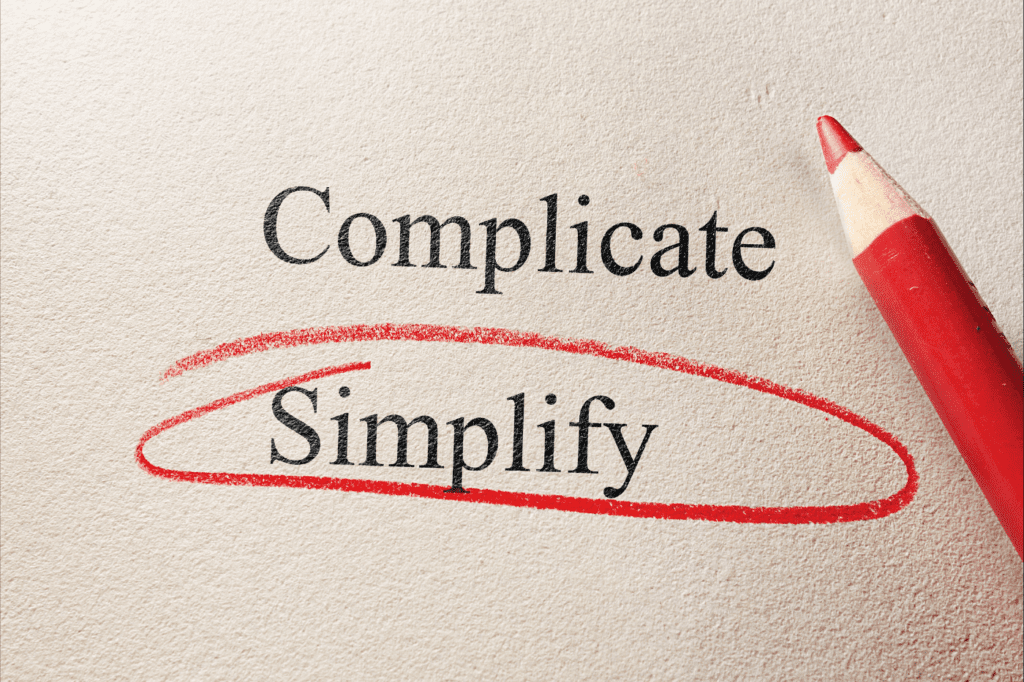
a. What are the steps to evaluate and identify my current consumption patterns?
- Track Your Spending:
- Begin by jotting down everything you spend on for a month. Categorize your spending into essentials (like groceries) and non-essentials (like impulse buys). This gives you a clear picture of where your money goes.
Challenge 1: Expense Artistry
- Turn your monthly expenses into a colorful pie chart. Assign each spending category a unique color and see, at a glance, where your money is flowing. This creative visual can be eye-opening.
- Analyze Your Purchases:
- Look at the non-essential purchases and ask yourself why you bought them. Was it out of necessity, boredom, or a fleeting impulse? Understanding your motivations is key to changing patterns.
Challenge 2: The Five Whys Technique
- For each non-essential purchase, ask “why” it was made. Then, for each subsequent answer, ask “why” again. Do this five times to dig deep and understand the root of your spending patterns.
- Reflect on Impact:
- Consider the environmental and social impact of your purchases. Were they sustainably made? Did they support ethical practices? Reflect on how your consumption aligns with your values.
Challenge 3: Sustainable Choices Tally
- Create a simple tally chart for a week. Every time you make a sustainable purchase (e.g., a reusable item), mark it down. Reflect on how many sustainable choices you’ve made by the end of the week.
b. How can I declutter and simplify my possessions for a more mindful lifestyle?
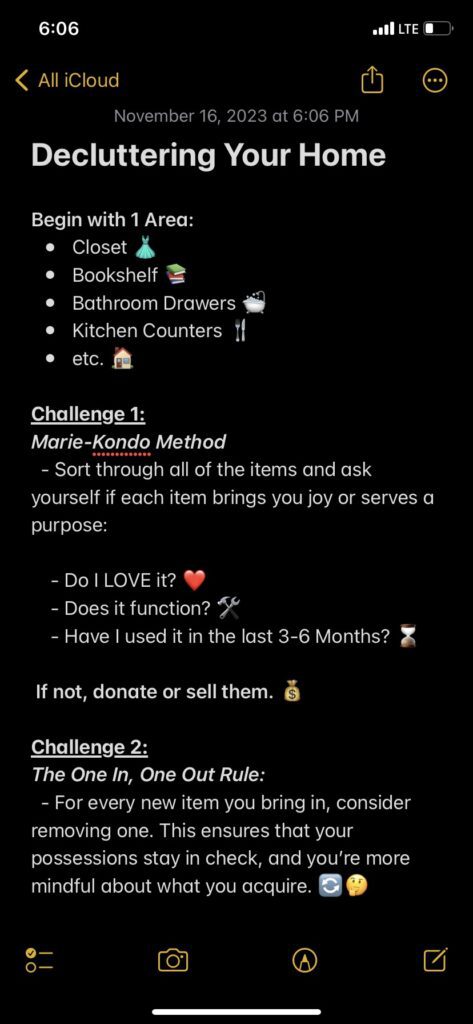
Start Small
Begin with one area of your home, like your closet or bookshelf. Sort through items and ask yourself if each item brings you joy or serves a purpose. If not, consider donating or selling them.
Challenge 1: The 30-Day Minimalism Game
- On the first day, remove one item. On the second, two items, and so on. Challenge yourself to reach 30 items by the end of the month. Share your progress with friends or online for accountability.
- The One In, One Out Rule:
- For every new item you bring in, consider removing one. This ensures that your possessions stay in check, and you’re more mindful about what you acquire.
Challenge 2: Closet Fashion Show
- Put on a fashion show with your clothes! Try on each item and strike a pose. If an outfit doesn’t make you feel amazing, consider letting it go. Invite friends or family for a virtual judging session for added fun.
- Digital Decluttering:
- Organize your digital space too. Delete unused apps, clear out old emails, and organize your files. A tidy digital space promotes clarity and reduces digital overwhelm.
Challenge 3: Digital Detox Day
- Designate a day for a digital detox. Challenge yourself to spend 24 hours with no digital screens. Instead, use this time to connect with nature, read a physical book, or engage in offline hobbies.
Remember, infusing creativity into the process can make evaluating and simplifying consumption habits an exciting and insightful adventure!
2. Incorporating Practical Strategies for Mindful Spending

Meet Jeff! 🧑💼 Jeff is an eco-conscious individual who loves embracing a sustainable lifestyle. Let’s follow Jeff on his journey to smart budgeting and intentional purchases! 💸✨
a. Creating a Mindful Budget
✓ Start with Your Values:
- Think about what matters most to you. Is it saving for a vacation, supporting local businesses, or investing in eco-friendly products?
- Allocate a portion of your budget to align with these values. Let’s say Jeff values sustainability and wants to contribute to a better environment. He decided to allocate 20% of his monthly budget to eco-friendly products and supporting local, sustainable businesses.
✓ Track Your Expenses:
- Keep a record of every purchase for a month. Categorize them (e.g., groceries, entertainment, bills) to understand your spending habits.
- Analyze where your money is going and adjust your budget to reflect your priorities. Jeff starts tracking his expenses meticulously for a month. He realizes that he’s spending more on eating out and online shopping than he thought. He also notices that he’s not allocating anything for eco-friendly products, which he’s passionate about.
✓ Set Realistic Goals:
- Define achievable financial goals based on your values. If you value health, maybe it’s investing in a gym membership or healthier food options.
- Jeff sets a goal to save 10% of his monthly budget for a gym membership to improve his health. He also sets a goal to allocate 20% of his budget towards eco-friendly products and supporting local businesses.
Challenge for You: Track your expenses for a week, categorize them, and identify one area where you could reallocate funds based on your values. Set a goal to align your spending with your values.
b. Tips for Mindful Spending
✓ Pause Before Purchasing:
- Before buying, take a moment to ask yourself if this purchase aligns with your values and goals. Consider if it’s a necessity or a desire.
- Jeff learns to pause and reflect before making any purchase. He asks himself if buying a new gadget aligns with his goal of living sustainably and supporting local businesses. He realizes that it doesn’t, so he decides to hold off on the purchase.
✓ Create a Shopping List:
- Plan your purchases in advance and stick to the list. Avoid impulsive buying.
- Jeff makes a list before grocery shopping and sticks to it, avoiding unnecessary purchases that are not aligned with his budget and values.
✓ Practice Gratitude:
- Before making a purchase, think of what you already have and appreciate it. This can reduce the desire for more and help you make more intentional choices.
- Jeff reflects on how grateful he is for his current smartphone, which still works perfectly. This gratitude reduces the urge to upgrade to the latest model.
Challenge for You: Before making any non-essential purchase, list three things you already own and appreciate. Notice how this practice affects your purchasing decisions.
c. Questions for Mindful Purchases
✓ Is it a Need or a Want?
- Ask yourself if the item is a necessity or a desire. Does it align with your values and priorities?
- Jeff frequently asks if the things he’s considering buying are essential needs or just wants. For instance, he’s tempted to buy a new shirt, but upon reflection, he realizes he already has plenty and can prioritize other purchases that align with his values.
✓ Will it Add Value to My Life?
- Consider how the purchase will enhance your life or contribute to your well-being in the long run.
- Jeff evaluates if the new kitchen appliance he’s eyeing will genuinely improve his cooking experience and contribute positively to his lifestyle.
✓ Can I Afford It Within My Budget?
- Check if the purchase fits within your budget without compromising your financial goals.
- Jeff calculates if the new bicycle he desires fits into his allocated budget for recreational activities. He ensures it doesn’t exceed the 25% of his budget allocated for non-essential expenses.
Challenge for You: Before buying anything, ask these three questions and see if the answers help you make a more mindful decision. Try applying these questions to at least one purchase this week.
Example for Jeff:
Jeff earns $3,000 per month. He allocates:
- 20% ($600) for eco-friendly products and supporting local businesses
- 30% ($900) for essential expenses (e.g., rent, bills)
- 15% ($450) for savings and investments
- 25% ($750) for non-essential expenses (e.g., dining out, hobbies)
- 10% ($300) for health and fitness (e.g., gym membership)
By following this budget, Jeff ensures that his spending aligns with his mindful consumption values and financial goals. He has room for flexibility while staying true to what matters most to him.
Remember, mindful spending is about conscious choices that reflect what truly matters to you. Happy budgeting and spending mindfully! 🌿
3. Opting for Conscious Choices When Buying Items

a. Supporting Ethical and Sustainable Brands
✓ Research and Educate Yourself:
- Take some time to research and learn about ethical and sustainable brands in various industries. Look for certifications like Fair Trade, B Corp, or information about eco-friendly practices.
✓ Check Brand Values and Practices:
- Visit the brand’s website and read about its values, manufacturing processes, and sourcing methods. Look for transparency regarding ethical labor, environmental impact, and sustainable materials.
✓ Consider the Product’s Lifecycle:
- Think about the entire lifecycle of the product, from sourcing raw materials to production, distribution, use, and disposal. Choose products that have a minimal negative impact on the environment throughout their lifecycle.
✓ Prioritize Local and Small Businesses:
- Support local artisans and small businesses. They often have a smaller ecological footprint and are more likely to prioritize fair wages and ethical practices.
✓ Look for Quality and Durability:
- Choose products that are well-made and built to last. Quality items usually need to be replaced less often, reducing waste in the long run.
✓ Ask for Recommendations:
- Seek recommendations from friends, family, or online communities that align with your values. They might know of brands that meet your ethical and sustainability criteria.
Challenge for You: Choose one item you plan to purchase this week and research ethical and sustainable brands that offer that item. Make an informed decision based on their values and practices.
b. Top 10 Brands That Align With Mindful Consumption

Lush 🛀
A cosmetics company focusing on fresh, handmade, ethically sourced, and cruelty-free products.
Patagonia 🏔️
A leader in sustainable outdoor apparel, known for its ethical practices, commitment to fair labor, and environmental initiatives.
Eileen Fisher 🌿
A fashion brand focused on sustainable and timeless clothing, striving for eco-friendly materials and fair wages for workers.
TOMS 👞
Known for its One for One® model, donating a pair of shoes for every pair purchased, and extending this approach to eyewear and coffee.
Allbirds 🐦
Sustainable footwear made from natural materials, emphasizing comfort, style, and eco-friendliness in every pair.
Dr. Bronner’s 🛁
A family-owned brand producing organic and fair-trade personal care products, emphasizing social and environmental responsibility.
Patanjali 🌾
An Indian brand offering natural and Ayurvedic products, promoting organic farming and environmental sustainability.
Warby Parker 🕶️
Providing affordable eyewear and following a Buy a Pair, Give a Pair program to help those in need.
Numi Organic Tea ☕
Offering organic and fair-trade teas, focusing on sustainability and community well-being.
REI 🏕️
A co-op that sells outdoor gear while investing in outdoor conservation efforts and promoting a sustainable outdoor lifestyle.
These brands are dedicated to mindful consumption, promoting ethical, sustainable, and environmentally friendly choices. By supporting them, you contribute to a better world for all. 🌍💚
4. Reduce Waste and Practice Mindful Disposal
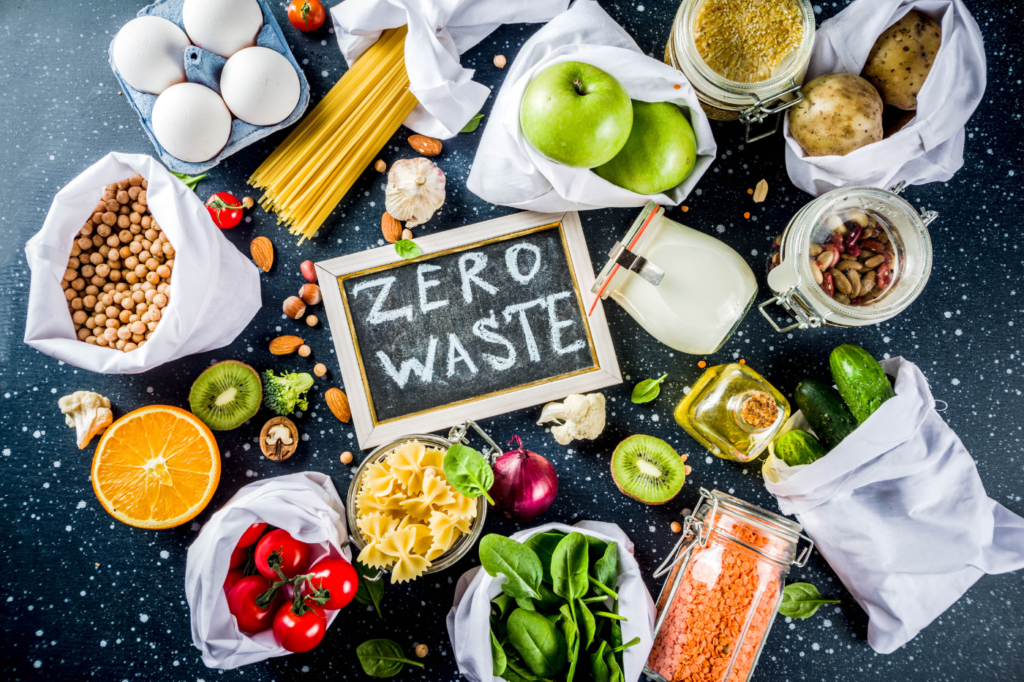
Read more in-depth info on this topic under HOW TO: MINIMIZE WASTE (ZERO WASTE LIVING GUIDE 2024)
a. Minimizing Waste through Recycling, Repurposing, or Composting
✓ Recycle Responsibly:
- Understand the recycling rules in your area. Separate recyclables properly and ensure they are clean and dry to avoid contamination.
✓ Repurpose and Reuse:
- Get creative! Repurpose items like glass jars for storage, old clothes for DIY projects, or plastic containers for planting.
✓ Compost Food Scraps:
- Start a compost bin for fruit and vegetable scraps, coffee grounds, and other compostable items. Use the compost to nourish your garden or plants.
✓ Donate Unwanted Items:
- Instead of throwing away usable items, consider donating them to charity organizations or thrift stores. Someone else might find value in what you no longer need.
✓ Avoid Single-Use Plastics:
- Say no to single-use plastics like plastic bags, bottles, and straws. Opt for reusable alternatives made from sustainable materials.
Challenge for You: Choose one item from your daily waste and find an alternative way to reuse, repurpose, or recycle it. Share your creative ideas with others to inspire mindful waste reduction.
b. 10 Repurposing Ideas for Common Waste Items
- Glass Jars:
- Use them to store pantry items, organize craft supplies, or create decorative vases.
- Plastic Bottles:
- Cut the top off and use them as planters for herbs or flowers.
- Old Clothes:
- Transform them into cleaning rags, quilts, or fashionable upcycled garments.
- Newspapers and Magazines:
- Use them for wrapping gifts, making papier-mâché projects, or as a base for art projects.
- Cardboard Boxes:
- Turn them into organizers for shoes, stationery, or kitchen utensils.
- Empty Tissue Rolls:
- Make seedling pots for gardening or use them as cable organizers.
- Bottle Caps:
- Create art pieces, or jewelry, or use them to make DIY magnets.
- CDs or DVDs:
- Paint and use them as coasters or turn them into mosaic art.
- Egg Cartons:
- Use them to organize small items like jewelry, screws, or beads.
- Coffee Grounds:
- Use them as a natural fertilizer for plants or mix them into a DIY face scrub.
c. Mindful Waste Reduction Practices for a Sustainable Lifestyle
✓ Practice a Zero-Waste Kitchen:
- Reduce waste by buying in bulk, using reusable containers, and making mindful food choices to minimize packaging waste.
✓ Opt for Digital over Paper:
- Embrace digital alternatives for bills, receipts, and subscriptions to reduce paper waste. Use e-books and e-readers to minimize printed material.
✓ Conscious Shopping:
- Buy products with minimal packaging or packaging made from recycled materials. Support companies that prioritize sustainability and have take-back programs for their products.
✓ Mend and Repair Items:
- Instead of discarding broken items, learn basic repair skills to fix them. Extend the lifespan of your belongings through minor repairs.
✓ Educate and Involve Others:
- Spread awareness about waste reduction within your community. Organize events or workshops to educate others about the importance of mindful disposal.
Challenge for You: Identify one area of your life where you generate a lot of waste. Implement one waste reduction practice and observe the positive impact it has on reducing your overall waste.
Remember, every small effort counts towards reducing waste and protecting our environment. Let’s work together to create a more sustainable and mindful way of living! 🌿🌎
5. Cultivate Gratitude for What You Have

a. Practices to Enhance Appreciation for Possessions
✓ Daily Gratitude Journal:
- Set aside time each day to write down three things you’re grateful for. Include possessions that bring you joy and make your life easier or more enjoyable.
✓ Declutter and Simplify:
- Regularly declutter your living space. As you sort through your possessions, reflect on their value and purpose. Keep only what truly matters to you and brings you happiness.
✓ Mindful Reflection:
- Before going to bed, take a few moments to reflect on the day. Acknowledge the possessions that made your day better and express gratitude for them.
✓ Express Gratitude Verbally:
- Make it a habit to express gratitude for your possessions out loud. This can reinforce your appreciation and bring it to the forefront of your mind.
✓ Practice Contentment:
- Instead of constantly seeking more, practice being content with what you have. Reflect on the abundance in your life and find joy in what you already possess.
Challenge for You: Select one possession you often take for granted. Reflect on its significance in your life and write a thank-you note to express gratitude for it.
b. Integrating Gratitude into Your Daily Routine
✓ Morning Gratitude Exercise:
- Start your day by listing three possessions you’re grateful for. Reflect on why they are meaningful to you.
Read more in-depth info on this topic under 7 BEST INTENTION-SETTING PROMPTS TO KICKSTART YOUR DAY WITH PURPOSE
✓ Grateful Mealtime Moments:
- During meals, take a moment to appreciate the food you have and the utensils and dishes that make eating possible and enjoyable.
✓ Evening Gratitude Reflection:
- Before bed, reflect on the possessions that added value to your day. Express gratitude for them and how they enhanced your daily experiences.
✓ Gratitude Walks:
- While walking, consciously think about and appreciate the possessions you’re using at that moment, whether it’s your phone, a good pair of shoes, or comfortable clothing.
✓ Weekly Gratitude Check-In:
- Set aside a specific time each week to reflect on the possessions that made a positive impact on your week. Express gratitude for them.
Challenge for You: Commit to integrating one of these gratitude practices into your daily routine for the next week. Notice how it affects your overall perspective on the possessions you have.
Cultivating gratitude for what you possess is a wonderful way to embrace mindful consumption and recognize the abundance that surrounds you. Let’s infuse gratitude into our daily lives! 🙏✨
6. Engage in Thoughtful Giving and Volunteering

a. Resources, Skills, or Time for Helping Others
✓ Financial Contributions:
- Allocate a portion of your income for charitable donations to causes you believe in.
✓ Skills and Expertise:
- Volunteer your professional skills, such as mentoring, tutoring, or providing legal or medical assistance, to those in need.
✓ Time Commitment:
- Dedicate a set number of hours each week or month to volunteer for a cause you’re passionate about.
✓ Donate Items:
- Regularly go through your possessions and donate clothes, books, or household items to those who could use them.
✓ Spread Awareness:
- Utilize your social media platforms or blog to raise awareness about important issues and encourage others to get involved or donate.
Challenge for You: Choose one way to help others—whether through financial contributions, volunteering time, or using your skills—and commit to starting this week.
b. 10 Thoughtful Gift Ideas
- Experience-Based Gifts:
- Offer an experience like a cooking class, concert, or spa day to create lasting memories.
- Homemade Treats:
- Bake cookies, make jams, or create homemade candles as personalized and thoughtful gifts.
- Plant or Tree Saplings:
- Give the gift of nature by gifting a plant, tree sapling, or a seed kit for gardening enthusiasts.
- Reusable Shopping Bags:
- Encourage eco-friendly practices by gifting reusable shopping bags made from sustainable materials.
- Books That Inspire:
- Choose a book that aligns with the recipient’s interests or goals to inspire and educate.
- Personalized Calendars or Journals:
- Create custom calendars or journals with meaningful photos or quotes for a personal touch.
- Fitness or Wellness Subscription:
- Gift a subscription to a fitness app, yoga platform, or meditation app to promote well-being.
- Artisanal or Fair Trade Items:
- Purchase handmade or fair trade products, supporting artisans and ethical practices.
- Donation in Their Name:
- Donate to a cause they care about and present it as a gift in their name.
- Time Together:
- Offer to spend quality time with them, whether it’s a hike, movie night, or a picnic in the park.
c. 10 Volunteering Ideas for Everyone
- Virtual Tutoring or Mentoring:
- Offer to tutor students virtually in subjects you excel in or mentor someone in your profession.
- Meal Preparations for Neighbors:
- Prepare and deliver meals to elderly or ill neighbors who may have difficulty cooking.
- Online Advocacy and Campaigns:
- Join online campaigns advocating for various causes by signing petitions or sharing information.
- Virtual Fundraising Events:
- Participate in or organize virtual fundraising events, such as online auctions or charity live streams.
- Remote Volunteering for Nonprofits:
- Offer your skills in graphic design, social media, or writing to nonprofits remotely.
- Community Cleanups:
- Organize or participate in community cleanup drives to keep your neighborhood clean.
- Letter Writing to Seniors or Troops:
- Write letters or cards to seniors in nursing homes or deployed troops to brighten their day.
- Donation Sorting at Local Centers:
- Volunteer to sort and organize donations at local shelters, food banks, or thrift stores.
- Support Hotlines:
- Volunteer for helplines, crisis support, or mental health hotlines to assist those in need.
- Virtual Storytelling for Children:
- Read books or tell stories virtually to children in hospitals or community centers.
d. Exploring Altruism and Its Connection to Mindful Consumption
Altruism, the act of selflessly helping others, is closely tied to a sense of purpose and happiness. When you engage in thoughtful giving and volunteering, it reinforces your mindful consumption habits by:
- Shifting Focus from Materialism:
- Altruism redirects your focus from accumulating possessions to contributing to the well-being of others and the community.
- Encouraging Gratitude:
- Giving and volunteering cultivate gratitude as you recognize the blessings you have and seek to share them with those less fortunate.
- Promoting Sustainable Practices:
- Altruism often involves repurposing or redistributing items you no longer need, aligning with sustainable consumption habits.
- Fostering a Sense of Purpose:
- By contributing to causes you believe in, you derive a sense of purpose beyond personal fulfillment and material gains.
- Boosting Emotional Well-being:
- Studies show that helping others triggers the release of endorphins, enhancing your mood and overall happiness.
Engaging in altruism amplifies the positive impact of mindful consumption by creating a harmonious cycle of gratitude, giving, and meaningful living. It’s a beautiful way to make a difference in the world while aligning with your mindful values. 🌟🤗
7. Mindful Consumption Beyond Material Items

a. Being Mindful of Media Consumption
✓ Set Boundaries:
- Define specific times for consuming news, social media, or any digital content. Avoid excessive consumption by adhering to these boundaries.
✓ Verify Sources:
- Verify the credibility of the sources you follow and the information you consume to ensure accuracy and reliability.
✓ Diversify Your Sources:
- Consume information from various sources to gain a well-rounded and unbiased perspective on different topics.
✓ Practice Digital Detox:
- Take regular breaks from screens and engage in offline activities to reduce digital overload and promote mindfulness.
✓ Reflect on Content Impact:
- Reflect on how the media you consume affects your emotions, thoughts, and behavior. Adjust your consumption accordingly for a positive impact.
Challenge for You: Dedicate one day a week to a media-free day. Use this time to engage in activities that promote mindfulness and connection with the present moment.
b. 10 Practices Promoting Mindful Consumption of Information and Digital Content
- Mindful Scrolling:
- Before scrolling, pause and reflect on your intention. Be conscious of the content’s effect on your emotions and thoughts.
- Regular Digital Declutter:
- Periodically review and unsubscribe from newsletters, unfollow accounts and remove apps that no longer serve you.
- Limit Push Notifications:
- Disable non-essential notifications to minimize distractions and be in control of when you engage with digital content.
- Engage in Active Reading:
- When reading articles or posts, ask questions and critically evaluate the content instead of passively consuming it.
- Practice Gratitude for Technology:
- Express gratitude for the advancements in technology that allow you to access information, connect with loved ones, and expand your knowledge.
- Set Reading Goals:
- Define your reading objectives to avoid aimless scrolling. Choose specific topics or genres that align with your interests and growth.
- Mindful Commenting and Sharing:
- Before commenting or sharing content, consider its potential impact and the accuracy of the information. Encourage respectful and meaningful discussions.
- Scheduled Digital Breaks:
- Incorporate short breaks between digital sessions to rest your eyes, stretch, and maintain a balanced relationship with technology.
- Curate Your Digital Space:
- Organize your digital platforms mindfully. Arrange apps, bookmarks, and folders to prioritize what matters most and minimize digital clutter.
- Practice Gratitude for Offline Moments:
- Take time each day to appreciate moments without digital devices. Be present with your surroundings and the people around you.
Challenge for You: Choose one practice from the list above and integrate it into your daily routine this week. Notice how it influences your consumption habits and overall well-being.
Mindful consumption of information and digital content is about consciously engaging with the digital world, being intentional with your actions, and fostering a balanced relationship with technology. Let’s embrace mindful media consumption for a more mindful and purposeful life! 🌟📱
EXAMPLE: A Day of Mindful Consumption

Morning
- 6:30 AM: Rise and shine, greeting the day with a big smile! Take a few moments for deep, refreshing breaths, setting a grateful tone for the day.
- 7:00 AM: Time for an amazing breakfast! Whip up a colorful, nutritious breakfast, relishing each bite and celebrating the flavors dancing on your taste buds.
- 7:30 AM: Dive into a fascinating book or tune into an inspiring podcast, letting your mind soar and your curiosity sparkle.
Midday
- 12:30 PM: Lunchtime, create a culinary masterpiece with fresh, vibrant ingredients. Marvel at the art of cooking and treat yourself to a delicious, mindful meal.
- 1:00 PM: Nature awaits! Head out for a mindful walk amidst the beauty of the outdoors. Let the sunshine embrace you, the breeze whisper secrets and the world be your playground.
- 2:00 PM: Digital Detox Time! Disconnect, unplug, and stretch it out. Breathe in, breathe out—embrace this moment of tranquility and rejuvenation.
Afternoon
- 3:00 PM: Declutter, the mindful way! Say adios to clutter and hello to space and serenity. Each discarded item is a step toward a more harmonious haven.
- 4:30 PM: Dive into your favorite hobby, let your creativity sparkle, and let your masterpiece tell a story.
Evening
- 6:00 PM: Dinner Time! Craft a culinary delight with love and mindfulness. Relish the delightful medley of flavors and express gratitude for the nourishment.
- 7:00 PM: Immerse yourself in an enlightening article or a thought-provoking documentary—let your intellect soar and your knowledge blossom.
- 8:00 PM: Reflect on the day’s blessings and victories. Celebrate the beauty of life, the joy of connections, and the power of mindfulness.
- 9:00 PM: Dive into the sanctuary of stillness. Close the day with a mindful meditation, letting peace embrace you as you drift into a world of dreams.
Every moment of this day is a vibrant celebration of mindfulness, a dance of gratitude, and a symphony of purposeful living. Embrace the magic of mindfulness—it’s a journey that adds sparkle to every step you take! 🎉🌟
Overcoming Challenges and Sustaining a Mindful Lifestyle
a. 10 Practical Tips
- Set Clear Intentions:
- Example: “I intend to buy locally sourced produce to support farmers in my community and reduce my carbon footprint.”
- Educate Yourself:
- Example: “I learned that opting for a reusable water bottle can save an average of 156 plastic bottles per person annually.”
- Start Small:
- Example: “This month, I’ll focus on reducing my single-use plastic consumption by bringing my own shopping bags and utensils.”
- Engage a Supportive Community:
- Example: “Joining a sustainable living group on social media has provided me with tips and encouragement to stay on track.”
- Practice Gratitude:
- Example: “Today, I’m grateful for the joy my minimalist lifestyle brings, appreciating each item for its value and purpose.”
- Mindful Budgeting:
- Example: “I’ve allocated a portion of my budget for investing in products from ethical and eco-conscious brands.”
- Mindful Reflection:
- Example: “Reflecting on my purchases this month, I noticed I spent less on non-essential items and more on experiences.”
- Disconnect to Reconnect:
- Example: “Every Saturday morning, I unplug from devices and spend quality time hiking with my family.”
- Practice Mindful Eating:
- Example: “While enjoying my meal, I’m mindful of the effort and resources it took to grow and prepare this food.”
- Celebrate Progress:
- Example: “This week, I celebrated using my bike for short errands, reducing my reliance on my car.”
b. How can I stay committed to mindful consumption amidst societal pressures and temptations?
- Stay Aligned, Stay Strong:
- Remember why you started this journey. Align your choices with your values and let that conviction empower you amidst societal pressures.
- Educate and Share:
- Share your knowledge and enthusiasm for mindful consumption with friends and family. Educating others can solidify your commitment and influence a supportive environment.
- Celebrate Your Wins:
- Acknowledge and celebrate your progress. Each mindful choice is a victory in creating a better world. Share these milestones to inspire yourself and others.
Conclusion
Embrace mindful consumption as a powerful catalyst for change. For instance, by setting clear intentions like opting for locally sourced produce, we align our values with our choices.
Every step, no matter how small, creates a significant impact. Let’s be mindful consumers, driving a sustainable and compassionate world, one intentional choice at a time. 🌍💚




